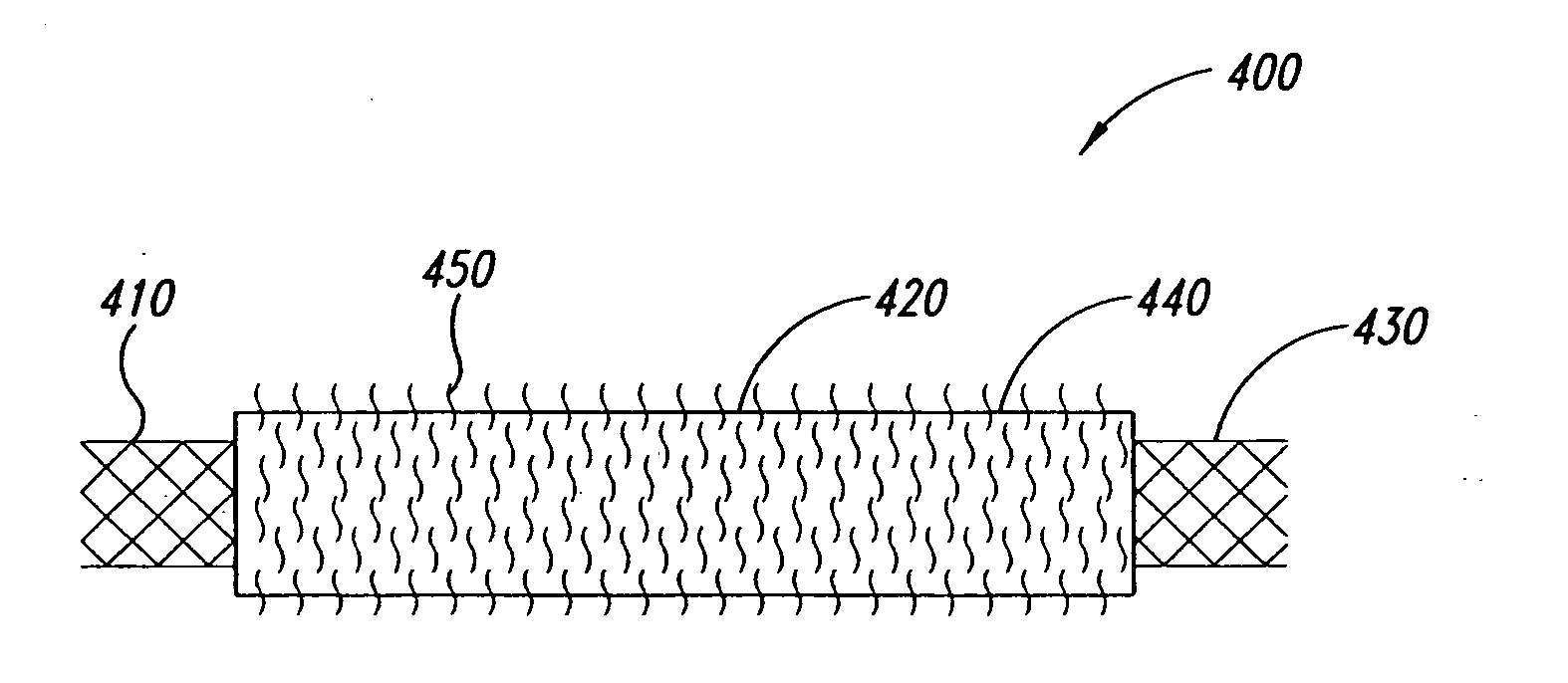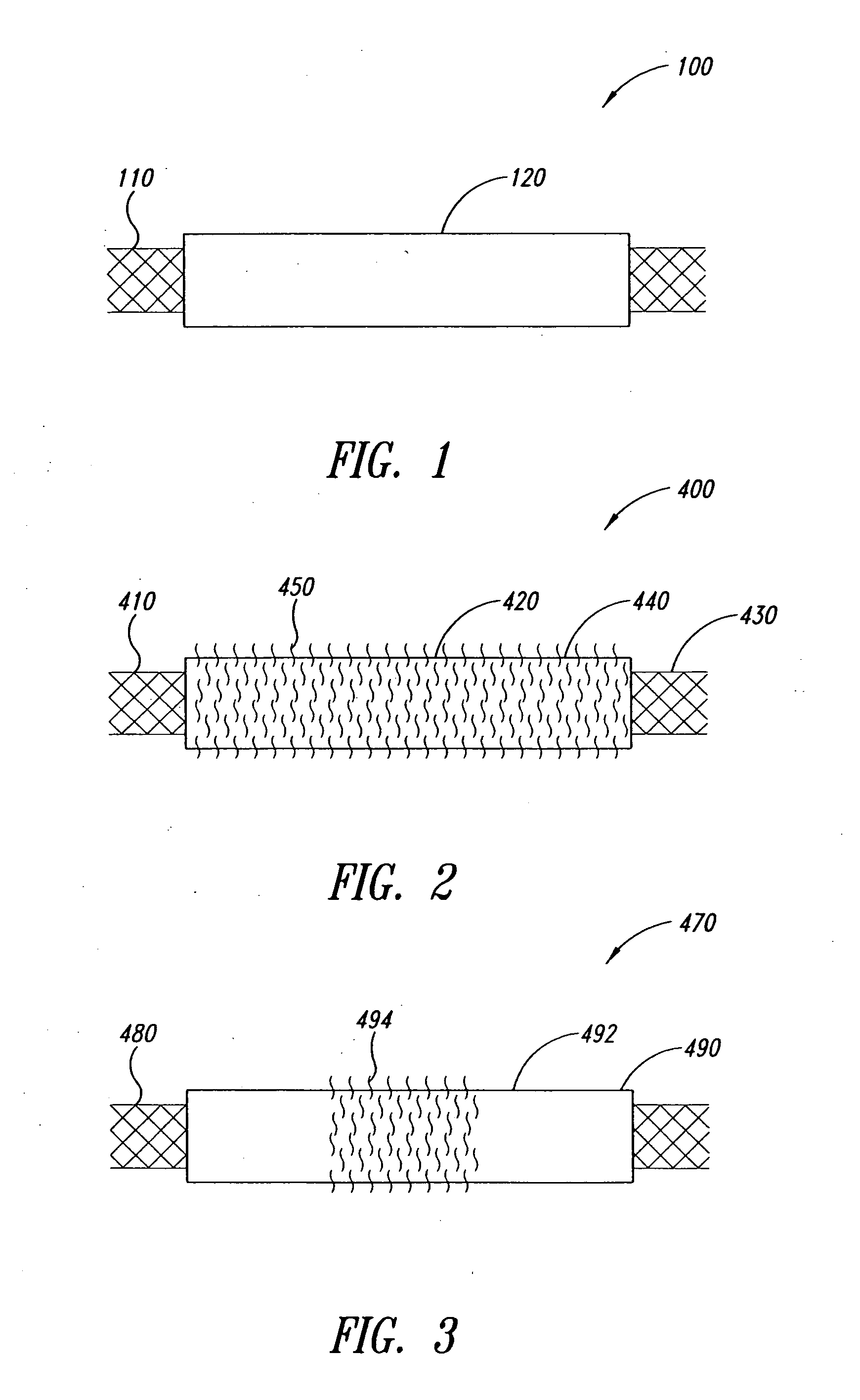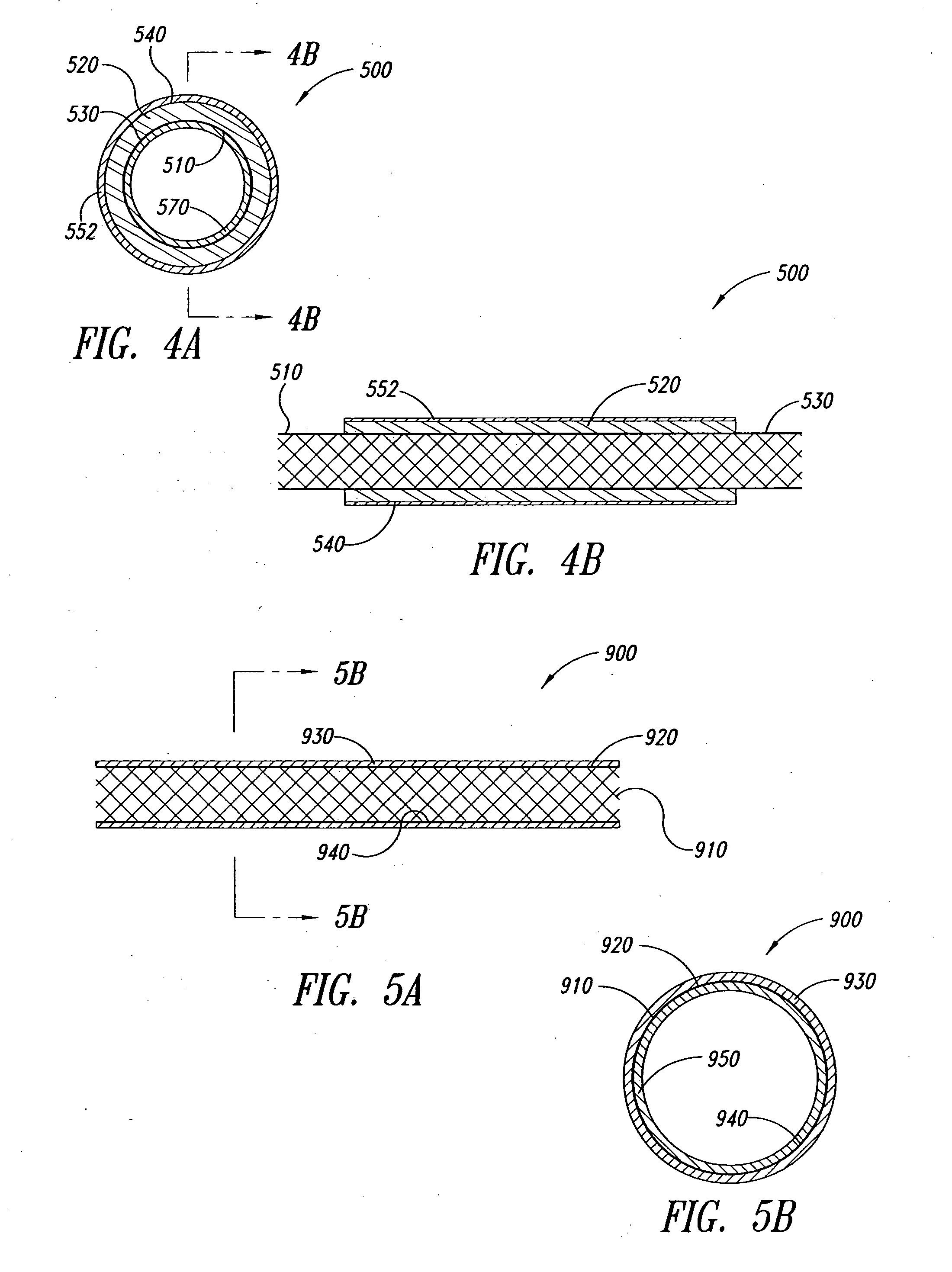Intravascular devices and fibrosis-inducing agents
a technology of intravascular devices and fibrosis, which is applied in the direction of blood vessels, prostheses, peptide/protein ingredients, etc., can solve the problems of perigraft leakage, device migration within the vessel or tissue, and inability to effectively attach the device to the surrounding tissue, etc., to achieve the effect of reducing perigraft leakag
- Summary
- Abstract
- Description
- Claims
- Application Information
AI Technical Summary
Benefits of technology
Problems solved by technology
Method used
Image
Examples
example 1
Coating of Stents with Fibronectin
[2173] The coating apparatus consisted of an overhead stirrer (Fisher Scientific) orientated horizontally. A conical stainless steel head was attached to the revolving chuck of the stirrer. One end of the covered stent was pulled up onto the conical head until held firmly. The other end was attached to a clip-swivel device that held the covered stent in a horizontal position, but allowed the covered stent to rotate along its axis. The stirrer was then set to rotate at 30 rpm so that the whole covered stent rotated along the horizontal axis at this speed. A 1% (w / w) fibronectin (Calbiochem Corporation, San Diego, Calif.) solution in sterile water was prepared. Two hundred microlitres of this solution was slowly pipetted as a 3 mm wide ring located 5 mm from the end of the covered stent fixed in the conical steel head over a period of 2 minutes as the covered stent rotated. The fibronectin was then dried under a stream of nitrogen as the covered sten...
example 2
Coating of a Covered Stent with Poly-L-Lysine
[2174] The coating apparatus consisted of a Fisher overhead stirrer orientated horizontally. A conical stainless steel head was attached to the revolving chuck of the stirrer. One end of the covered stent was pulled up onto the conical head until held firmly. The other end was attached to a clip-swivel device that held the covered stent in a horizontal position, but allowed the covered stent covered stent to rotate along its axis. The stirrer was set to rotate at 30 rpm so that the whole covered stent rotated along the horizontal axis at this speed. A 1% (w / w) poly-L-Lysine (Sigma, St. Louis, Mo.) solution in sterile water was prepared. Two hundred microliters of this solution was slowly pipetted as a 3 mm wide ring located 5 mm from the end of the covered stent fixed in the conical steel head over a period of 2 minutes as the covered stent rotated. The poly-L-Lysine was then dried under a stream of nitrogen as the covered stent continue...
example 3
Coating of Covered Stents with N-Carboxybutyl Chitosan
[2175] The coating apparatus consists of a Fisher overhead stirrer orientated horizontally. A conical stainless steel head is attached to the revolving chuck of the stirrer. One end of the covered stent is pulled up onto the conical head until held firmly. The other end is attached to a clip-swivel device that holds the covered stent in a horizontal position, but allows the covered stent to rotate along its axis. The stirrer is set to rotate at 30 rpm so that the whole covered stent rotates along the horizontal axis at this speed. A 1% (w / w) n-carboxybutyl chitosan (Carbomer, Westborough, Mass.) solution in sterile water is prepared. Two hundred microlitres of this solution is slowly pipetted as a 3 mm wide ring located 5 mm from the end of the covered stent fixed in the conical steel head over a period of 2 minutes as the covered stent rotates. The n-carboxybutyl chitosan is dried under a stream of nitrogen as the covered stent...
PUM
| Property | Measurement | Unit |
|---|---|---|
| length | aaaaa | aaaaa |
| length | aaaaa | aaaaa |
| diameter | aaaaa | aaaaa |
Abstract
Description
Claims
Application Information
 Login to View More
Login to View More - R&D
- Intellectual Property
- Life Sciences
- Materials
- Tech Scout
- Unparalleled Data Quality
- Higher Quality Content
- 60% Fewer Hallucinations
Browse by: Latest US Patents, China's latest patents, Technical Efficacy Thesaurus, Application Domain, Technology Topic, Popular Technical Reports.
© 2025 PatSnap. All rights reserved.Legal|Privacy policy|Modern Slavery Act Transparency Statement|Sitemap|About US| Contact US: help@patsnap.com



